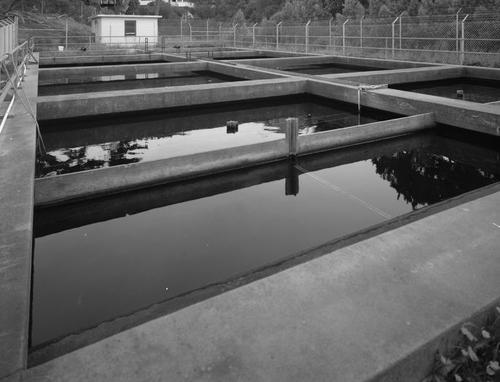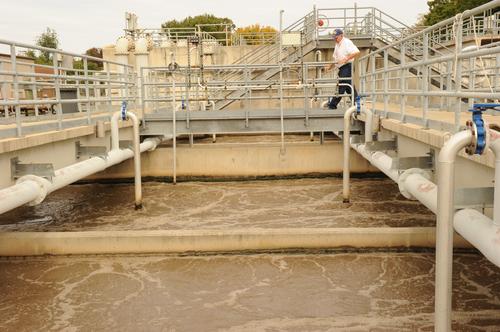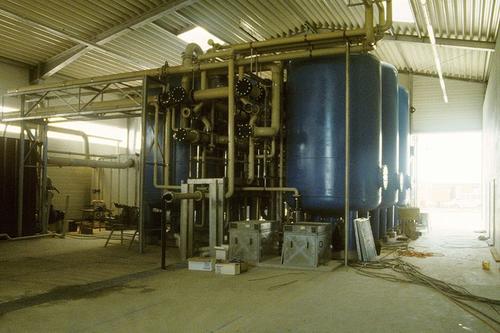Tertiary Treatment
Tertiary Treatment is the extra treatment after biological secondary processes to further stabilize oxygen-demanding substances in the wastewater, to remove nitrogen and phosphorus or to eliminate microorganisms and pathogens. Using physical-chemical separation techniques such as adsorption, flocculation/precipitation, membranes for advanced filtration, ion exchange, and reverse osmosis. In various combinations, these processes can achieve any degree of pollution control desired. Sometimes some of the following methods are included or attached to secondary treatment. (Tchobanoglous et al. 2003 & EPA 2004)
Nitrogen Control
Nitrifying bacteria present in wastewater treatment can biologically convert ammonia to the non-toxic nitrate through a process known as nitrification. The nitrification process is normally sufficient to remove the toxicity associated with ammonia in the effluent. Since nitrate is also a nutrient, excess amounts can contribute to the uncontrolled growth of algae. In situations where nitrogen must be completely removed from effluent, an additional biological process can be added to the system to convert the nitrate to nitrogen gas. The conversion of nitrate to nitrogen gas is accomplished by bacteria in a process known as denitrification. (EPA 2004)
Carbon adsorption
Carbon adsorption technology can remove organic materials from wastewater that resist removal by biological treatment. Carbon adsorption consists of passing the wastewater effluent through a bed or canister of activated carbon granules or powder, which remove more than 98 % of the trace organic substances. (EPA 2004)
Biological nutrient removal
Some biological treatment processes called biological nutrient removal (BNR) can achieve nutrient reduction, removing both nitrogen and phosphorus. Most of the BNR processes involve modifications of suspended growth treatment systems so that the bacteria in these systems also convert nitrate nitrogen to inert nitrogen gas and trap phosphorus in the solids that are removed from the effluent. (EPA 2004)
Coagulation-sedimentation
Phosphorus removal can also be achieved through chemical addition and a coagulation-sedimentation process. Alum, lime, or iron salts are chemicals added to the wastewater to remove phosphorus. With these chemicals, the smaller particles floc or clump together into large masses. (EPA 2004)
Disinfection
Untreated domestic wastewater contains microorganisms or pathogens that produce human diseases. Processes used to kill or deactivate these harmful organisms are called disinfection. Chlorine is the most widely used disinfectant but ozone and ultraviolet radiation are also used frequently for wastewater effluent disinfection. However, any free (uncombined) chlorine remaining in the water, even at low concentrations, is highly toxic to beneficial aquatic life. Therefore, chlorine gas is used less frequently now than in the past. (EPA 2004)


